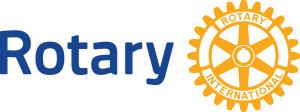Building A Better Tomorrow, Today: Rotary International Tackles Humanitarian Challenges with Okta
Rotarians around the world are “building a better tomorrow,” but Peter Markos, Rotary International’s CIO, couldn’t wait until tomorrow to build a better Rotary.org. He wanted to provide club members with the tools needed to eradicate polio, along with a handful of other noble initiatives, today. This global service organization is made up of more than 34,000 clubs across 220 countries, and its 1.2 million members use a slew of interactive tools and grant application systems to promote high ethical standards and advance goodwill and peace around the world.
But having and sharing tools across those clubs wasn’t enough. For each app to be valuable and effective, it needed to be tailored to the individual accessing it (which means being tailored to their club and their role in it). To solve this identity problem, Peter decided to integrate an identity management solution into the customer-facing portal, MyRotary.org. We sat down with him to find out why identity was so central to their success, why he chose Okta and how together we play a key role in achieving a polio-free world.
Tell us a little about MyRotary.org. What tools do Rotarians use to do their jobs?
We provide our members with an array of services through our website, MyRotary.org. We have a wealth of content and information about how to run an effective club or meeting as well as tools to help them maximize their club experience. For example, Rotary Club Central allows a club to set strategic goals for membership growth and fundraising, and then measure their progress against them. We also have an online grant application system and an e-learning offering that’s out in the cloud.
So each Rotarian had access to these applications through the MyRotary.org portal -- why the need for an identity management provider?
As we look at the wealth of tools that we are making available to Rotary members, much of the access within the applications is very much driven upon who you are and what your role is within the club. One of the great things about Rotary is that leadership at a club level changes annually so, identity is at the core of what we provide. We need to know who you are and when you’re in that role.
 How did you land on Okta? We looked at OneLogin. We looked at Symplified. The truth is that when we looked at all the models, it seemed that Okta had the best approach for what we needed. [Okta] had a complete vision. Managing identity, paired with the integration and single sign-on approach that they were following, was very consistent with what we needed to have happen in the coming years for our external user-base. It was not a very internally-focused only vision. We really were looking at a broad spectrum of how to approach this use case.
How did you land on Okta? We looked at OneLogin. We looked at Symplified. The truth is that when we looked at all the models, it seemed that Okta had the best approach for what we needed. [Okta] had a complete vision. Managing identity, paired with the integration and single sign-on approach that they were following, was very consistent with what we needed to have happen in the coming years for our external user-base. It was not a very internally-focused only vision. We really were looking at a broad spectrum of how to approach this use case.
So how does this vision play out, and what do things look like after implementing Okta?
We’re now using Okta for authentication, so we know the identity of our members and if they’re able to successfully log in. We’ve also integrated Okta with our CRM, so we know what role an individual is performing, and also when they’re active in that role, as our members change positions every year.
Rotary has also made the program the foundation for the future. We’ve begun crowdsourcing application functionality. Okta helps us to lower barriers to adoption by making it easy for everyday Rotary members to know how to get into this new functionality developed throughout the Rotary world. With the same ID and password, they get right to the good stuff and the value. No need to jump through hurdles, like manually inputting club-specific data or setting up accounts in these tools and apps – which is both error-prone and time-consuming! By getting right to the value, our members and clubs are able to do more for their local communities and communities around the world.
Interested in learning more about Rotary’s unique, externally-facing use case? See the entire interview below or on our customer testimonial page.

